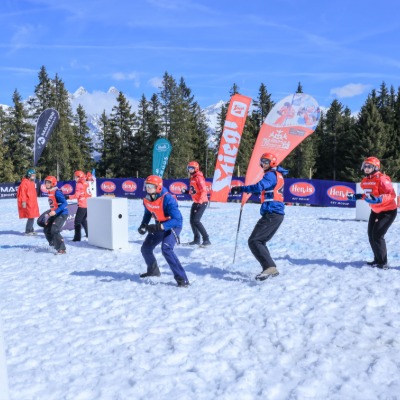Summer Booking Picture Brightened By Late Season Snowfall

Significant snowfall in many regions continued through March and helped slow the downward direction of occupancy for the 2017-18 winter season, according to Inntopia in their monthly DestiMetrics Market Briefing released on Monday. As of March 31, seasonal occupancy reversed from a seasonal 2.6 percent decline at the end of February to being down only 1.3 percent by the end of March. The Average Daily Rate (ADR) for the season is up a modest 2.8 percent with increases in five of the six winter months while seasonal revenues are up a slight 1.5 percent compared to last year at this time.
Boosted by plentiful snow, the month of March finished up 0.5 percent compared to last year at this time and helped drive an aggregated 1.7 percent gain in revenue for the season as of March 31. Booking pace in March strongly reflected the impact of improved slope conditions as bookings made during March for March arrivals shot up 35.1 percent compared to last year, while bookings for April arrivals jumped up 11.5 percent. Also credited with driving increased business, lodging properties dropped rates slightly for the month and shaved the aggregated ADR for the season from being up 2.3 percent at the end of February to being up only 1.1 percent by the end of March.
“Despite extreme volatility in financial markets, mountain travelers reversed some downward trends that began in January and have returned the season to modest revenue gains after a nearly flat report last month,” offered Tom Foley, vice president of Business Intelligence for Inntopia. “However, with one more month to go, overall occupancy is likely to finish below last year, while rate and revenue should both score a win.”
Uncertainty and volatility on Wall Street persisted into March as the U.S. and Chinese governments raised tariffs on certain imports and increased the rhetoric about future trading. The Dow Jones Industrial Average (DJIA) declined 3.7 percent during the month leaving it 9.4 percent below the all-time high recorded 60 days earlier. Other indexes and international markets also reacted to the U.S. and Chinese positions but despite the instability, the DJIA remains 16.6 percent higher than at this same time last year. The Consumer Confidence Index (CCI) slipped a modest 2.2 percent in March as consumer’s outlook about current business conditions and the stock market dipped although overall confidence remains high. Employers added an anemic 103,000 jobs during the month, which was well below projections. The figures for January and February were also adjusted down a combined 50,000 from prior estimates but the Unemployment Rate remained unchanged at 4.1 percent for the sixth consecutive month.
“Despite some dramatic swings in the market and geopolitical forces having an impact, consumers continue to remain positive about the economy,” reported Foley. “The overall strength of the economy is giving lodging properties and other service providers an advantage as they set pricing and anticipate bookings,” he continued.
As of March 31, summer occupancy from May through September is up 4.9 percent while ADR for this same period is up a slight 1.5 percent compared to the same time last year. Four of the five months are posting year-over-year increases in occupancy with only September showing a decline.
“The winter of 2017-18 has been an interesting one, to say the least,” admitted Foley. “A strong start in late November was followed by a long, dry period and then the snow came roaring back in late February and created a real roller coaster season. As we near the official finish line though, it seems unlikely that we will post a gain in occupancy over last year’s record season, but it is almost certain that revenues will post a year-over-year gain and set a new record. In an erratic season like this one, that is an accomplishment,” Foley concluded.
DestiMetrics, part of the Business Intelligence platform for Stowe-based Inntopia, tracks lodging performance in resort destinations. They compile forward-looking reservation data each month and provide individualized and aggregated results to subscribers at participating resorts. Data for western resorts is derived from a sample of approximately 290 property management companies in 20 mountain destination communities, representing approximately 30,000 rooms across Colorado, Utah, California, Nevada, Wyoming, Montana, and Idaho an may not reflect the entire mountain destination travel industry. Results may vary significantly among/between resorts and participating properties.













